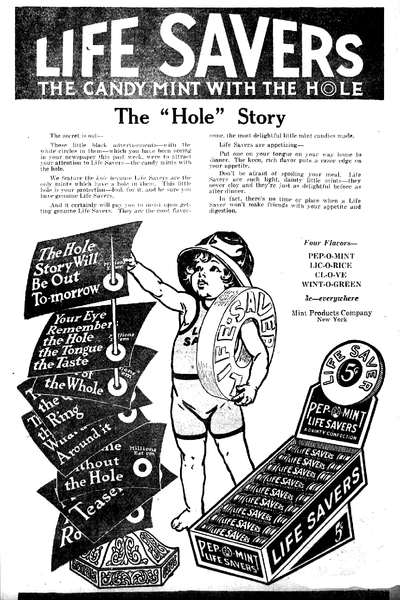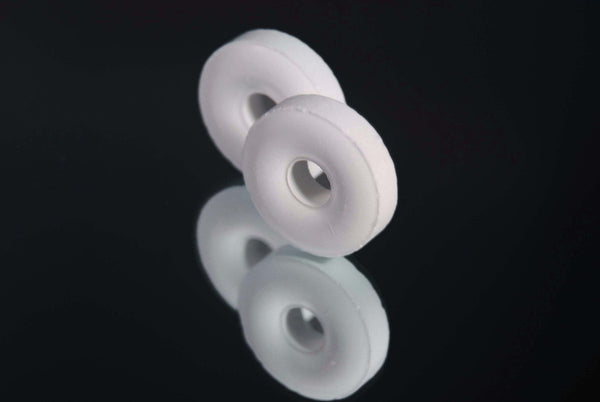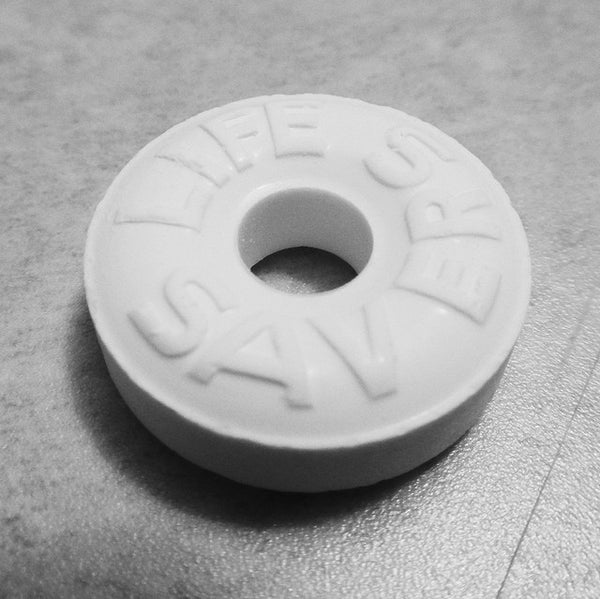The Life Saver mint, created in 1913, is the first flavor of Life Savers ever created. The vegan nature of Life Saver mints is an ongoing debate of “What comes from where?”
As recently as late last year, vegan bloggers, and even PETA were still researching and debating the vegan nature of this popular candy by the Wrigley company.
The question is raised upon learning that one ingredient in the basic recipe of the mint is sourced from animals. However, a synthetic version of the same ingredient can also be manufactured from non-animal sources. Still, Wrigley’s wasn't clear in their answer as to whether their pioneering product is vegan or not.
Life Saver Mint Ingredients
- Sugar
- Corn syrup
- High fructose corn syrup
- IGH fructose corn syrup
- Citric acid
- Red 40, Yellow 5, Blue 1
- Natural and artificial flavors
- Stearic acid
This basically shows a typical candy recipe: sugar, a variety of corn syrups, some high fructose, citric acid for flavoring plus additional flavor varieties, and coloring to make the product appealing to the public. At first sight, these mints do not pose any risk to a vegan lifestyle. Or do they?

What is the big deal?
The debate comes from recent investigations from the The Vegetarian Resource Group, which stated that some ingredient companies would not claim all of their ingredients and purchases for “food grade” products. One of the controversies comes from the use of stearic acid.
Stearic acid (also known as Octadecanoic Acid) is a fatty fraction used as a lubricant for pills during their manufacturing. It can be used for candy and other things meant to be swallowed or chewed. It is what makes a Life Saver, for example, stay compacted and then fall apart easily when chewed.
According to this report, Wrigley admitted that the stearic acid they use “is an animal-based ingredient”, and it was further confirmed that this acid is indeed sourced from animals such as pork and beef.
These claims may be surprising to people who are not aware of how the vegan vs. non-vegan world work, but it is really not too surprising to find that animals source more than just food. Although this does not apply specifically to lifesaver mints, gelatin is actually a product used in Lifesaver gummies, and other products of the same texture. Gelatin is a product of cartilage, bladder and other animal body parts.
This information leads us to the now unequivocal conclusion that Life Saver mint candies are not entirely vegan. Perhaps if the ingredient used to lubricate and compact the contents of the product were switched to a plant-based source, as stearic acid can come from plants, then the candies would pass the vegan test.

Conclusion
Life Saver mint ingredients are all vegan, with the exception of one, which renders the entire candy not vegan. Still, there is an argument to be made as to also learning where the sugar comes from, and whether it is manufactured from bone char. Since sugar is not the focus in the ingredients list, and all the other products are cleared, the one left to discuss is stearic acid.
This lubricant and pill compactor is used to make the surface of candies, and other objects that are meant to be swallowed, a bit smoother to the throat. It also allows for the candy to form and then break apart easily upon chewing. The problem is that such a lubricant is also a fatty acid that is often sourced from pork and beef. Therefore, this ultimately disqualifies the candy from the vegan list.

Images taken from flickr and wikipedia

